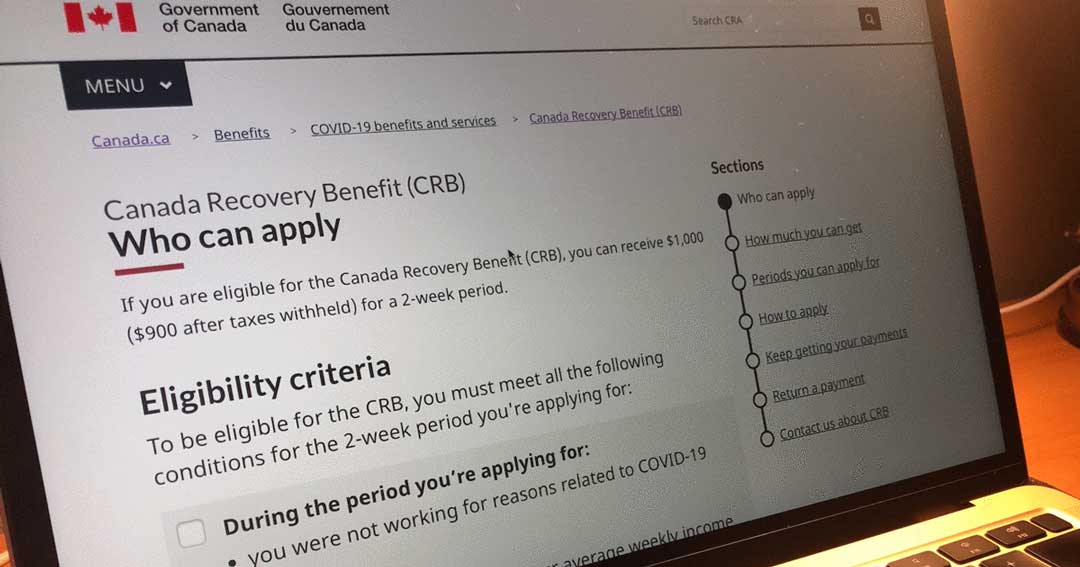
The Canada Revenue Agency (CRA) launched the Canada Emergency Response Benefit (CERB) as the flagship COVID-19 program by the Canadian government in 2020. CERB became a lifeline for Canadians who lost income due to the pandemic. The program ended on September 27, 2020, and made way for CERB replacements.
The federal government revamped the Employment Insurance (EI) system and introduced the Canada Recovery Benefit (CRB) to transition Canadians still in need of financial aid. With no visible end to the pandemic, despite hopeful developments on the vaccine front, the government announced two major updates for EI and CRB.
Maximum duration
Many CRB recipients are due to exhaust their benefits on March 27, 2021. The government’s announcement to update CRB and EI came right on time. One of the changes introduced by the CRA will be an extension of CRB from the original 26 weeks to 38 weeks. For regular EI benefits, the CRA has extended the period to 50 weeks for claims made between September 27, 2020, and September 25, 2021.
The federal government also extended the Canada Recovery Caregiving Benefit (CRCB) and Canada Recovery Sick Benefit (CRSB). The CRCB duration is also 36 weeks after the update, while the CRSB has been extended from two to four weeks.
CRA cash benefit amount
The CRA pays $1,000 for each two-week CRB eligibility period, which is actually $900 after the 10% withholding tax is deducted at the source. For self-employed individuals who prefer access to their EI benefits through Service Canada, the government has reduced the self-employed income threshold (for 2020 earnings) from $7,555 to $5,000.
You can earn income while you receive CRB, provided that your annual income for the calendar year will not go over $38,000. You will need to pay 50% of each dollar of your income that goes above $38,000.
If you qualify for the EI benefit, the minimum amount you can receive per week is $500 (subject to a 10% tax on payment), but some people may be eligible to receive up to $573 per week, depending on their previous income. The proceeds for both CRSB and CRCB are $450 per week (subject to a 10% withholding tax upon payment).
Source: CRA
Newsletters
No Results Found
The page you requested could not be found. Try refining your search, or use the navigation above to locate the post.
Events & Sponsorship
No Results Found
The page you requested could not be found. Try refining your search, or use the navigation above to locate the post.
Articles & Publications
How to Use Excel for Small Business Accounting
Microsoft Excel can make simple accounting tasks more accessible. Explore the features and benefits of using Excel for small business accounting. Accountants are known for wearing pocket protectors and spending their days working in Microsoft Excel. I can vouch for...
Canada’s Child Benefit Boost Is Coming In May & Here’s How To Get It
Eligible families can get up to $1,200 per young child in 2021. Eligible Canadian families receiving the Canada Child Benefit (CCB) can expect a little extra money this month, thanks to the CCB young child supplement (CCBYCS). The extra money — which is up to $1,200...
Tidy Up Your Finances
Time to tidy up your finances. As the tax-filing season ended on April 30th after a year that was upended by the pandemic, financial pros suggest investors take stock of their financial position and do a little spring cleaning. While portfolio and financial management...
About hobbies and side hustles
About hobbies and side hustles You may think it is just a hobby, but CRA may disagree. CRA wants its fair share if you earn money through a little side hustle, business activity, or another extra gig. The agency believes many tax dollars in the past may have gone...
How to Track Business Expenses: 7 Steps for Success
Tracking business expenses is an integral part of maintaining a small business, and as a small business owner, you can't afford to ignore it. Learn how to start tracking expenses with these steps. You may use a variety of methods to track business expenses. Still, to...